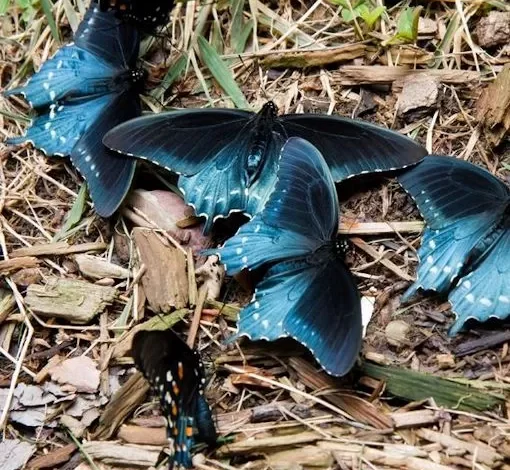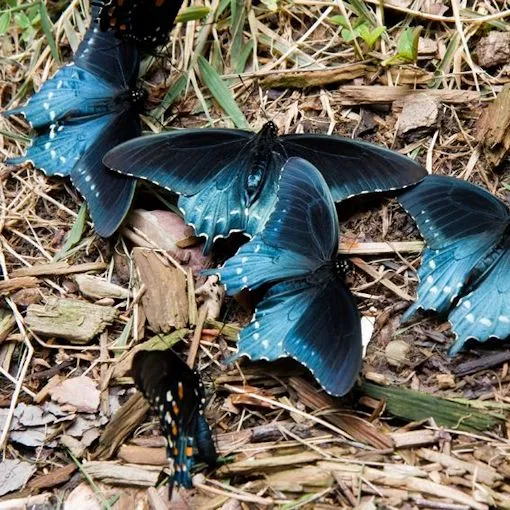How to Raise Butterflies Indoors A Comprehensive Guide


Unlock the beauty and wonder of butterfly metamorphosis in the comfort of your own home
Are you fascinated by the intricate transformation butterflies undergo from egg to caterpillar to adult? Do you want to witness this magical process up close and personal? Look no further! In this article, we will delve into the art of raising butterflies indoors. Not only will you gain a deeper understanding of their life cycle, but you’ll also learn how to create a safe and nurturing environment for these delicate creatures. So, let’s spread our wings and embark on this captivating journey together!
Heading 2: The Delicate Life Cycle of Butterflies
Butterflies go through a remarkable life cycle consisting of four distinct stages. Each phase holds its own wonders and challenges. Let’s explore them one by one.
Egg Stage: The Small Beginnings
At this embryonic stage, a tiny miracle begins to take shape. The female butterfly carefully selects a suitable host plant on which to lay her eggs. These minuscule orbs hold the potential for new life, containing all the genetic information needed to develop into a butterfly. It often takes around 3 to 5 days for the eggs to hatch, but this timing can vary depending on the species.
Caterpillar Stage: The voracious appetite
Once the eggs hatch, out comes the caterpillar—a ravenous eating machine! This is the growing phase where the caterpillar devotes most of its energy to consuming leaves and gaining weight. As it feasts, its exoskeleton sheds several times to accommodate its expanding body. During this stage, it’s crucial to provide an adequate supply of fresh foliage to ensure the healthy growth of your caterpillars.
Chrysalis Stage: The Transformation Begins
When the caterpillar has reached its full size, it embarks on a truly extraordinary process—the transformation into a chrysalis. Within this protective casing, the caterpillar’s body undergoes a complete overhaul. Cells divide, organs reform, and the caterpillar literally dissolves into a nutrient-rich soup. After a period of about 10 to 14 days, a mesmerizing metamorphosis takes place, and a butterfly emerges from the chrysalis.
Adult Butterfly Stage: The Final Elegance
The emergence of an adult butterfly signals the culmination of its journey. With fragile wings and vibrant colors, it takes its first flight, ready to explore the world. During this phase, butterflies play a crucial role in pollination, aiding in the reproduction of various plants. As they search for nectar, they contribute to the health and diversity of ecosystems.
Heading 2: Creating a Nurturing Habitat Indoors
To successfully raise butterflies indoors, it is essential to create an environment that mirrors their natural habitat. Follow these steps to provide a nurturing space for these enchanting creatures:
Step 1: Selection of Butterfly Species
Research different butterfly species to determine which ones are suitable for indoor rearing. Some common choices include the Painted Lady, Monarch, and Swallowtail butterflies. Consider factors such as climate compatibility, availability of host plants, and ease of care when making your selection.
Step 2: Setting Up the Enclosure
Choose a spacious enclosure with proper ventilation to house your growing caterpillars. A large netted cage or a well-ventilated aquarium can serve as suitable options. Ensure there is ample space for the caterpillars to move and hang during the chrysalis stage.
Step 3: Providing Host Plants
Identify the specific host plants required by your chosen butterfly species. Different species have varying preferences, so it’s crucial to provide the appropriate foliage on which they can lay eggs and the caterpillars can feed. Some common host plants include milkweed for Monarchs and parsley for Swallowtails.
Step 4: Collecting Eggs or Caterpillars
Once you’ve created a suitable habitat, it’s time to collect the eggs or caterpillars. Gently transfer them from outdoor plants, ensuring not to disturb their delicate bodies. Use a small container lined with damp paper towels to transport the eggs or caterpillars without causing harm.
Step 5: Providing Optimal Care
Maintain a comfortable temperature and humidity level within the enclosure. Monitor the growth of the caterpillars, ensuring they have a continuous supply of fresh foliage to feed on. Regularly clean the enclosure, removing any waste or spoiled leaves to maintain a hygienic environment.
Heading 2: FAQs about Raising Butterflies Indoors
FAQ 1: How long does it take for a butterfly to emerge from the chrysalis?
On average, it takes around 10 to 14 days for a butterfly to emerge from the chrysalis. However, the timing can vary based on factors such as temperature, species, and individual variations.
FAQ2: How do I prevent caterpillars from escaping their enclosure?
To prevent caterpillars from escaping, make sure your enclosure has fine mesh or netting that is tightly secured. Check for any gaps or openings that they could squeeze through. Additionally, provide enough food and space within the enclosure to discourage them from attempting to leave.
FAQ 3: What should I do if a butterfly is having difficulty emerging from the chrysalis?
If a butterfly is struggling to emerge from the chrysalis, it’s important not to intervene immediately. The emergence process can be strenuous, and the butterfly needs to strengthen its wings naturally. However, if more than 24 hours pass and the butterfly shows no progress or appears stuck, you may gently assist by carefully opening the chrysalis with a clean and sterilized pair of tweezers.
FAQ 4: Can I release the butterflies after they emerge indoors?
Yes! Once the butterflies have fully emerged and their wings have dried and hardened, you can release them into the outdoors. Choose a sunny day with mild weather conditions, ideally above 55°F (13°C). Find a suitable location with nectar-rich flowers and gently encourage the butterflies to take flight.
FAQ 5: Is it necessary to rear butterflies indoors, or can I observe them in nature?
Rearing butterflies indoors offers a unique opportunity to witness their life cycle up close and protect them from predators and harsh environmental conditions. However, observing butterflies in their natural habitat is equally rewarding. It allows you to appreciate their interaction with the ecosystem and gain a deeper understanding of their role in nature.
Conclusion
Raising butterflies indoors is a captivating and rewarding experience that allows you to witness the incredible transformation these delicate creatures undergo. By providing a nurturing environment and following the proper care guidelines, you can play an active role in supporting butterfly populations and contributing to the conservation of these mesmerizing insects.
So, why not embark on this journey and marvel at the wonder of butterfly metamorphosis right in your own home? Get ready to witness the magical moments from egg to caterpillar to beautiful, fluttering butterfly. Happy butterfly raising!



